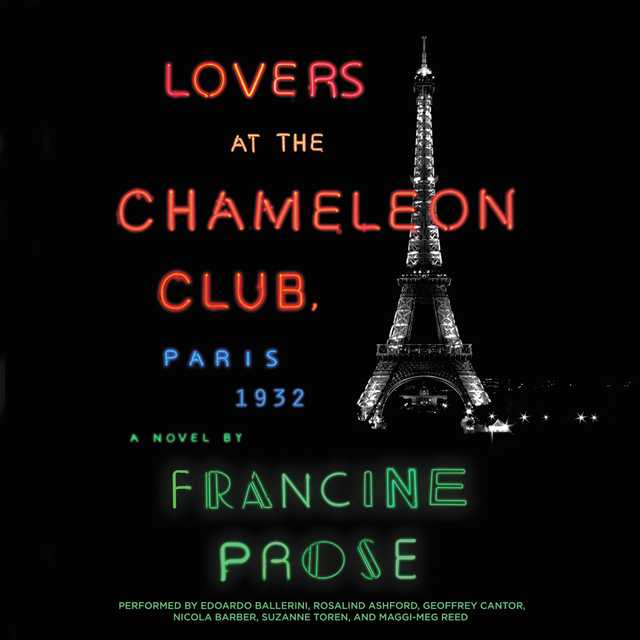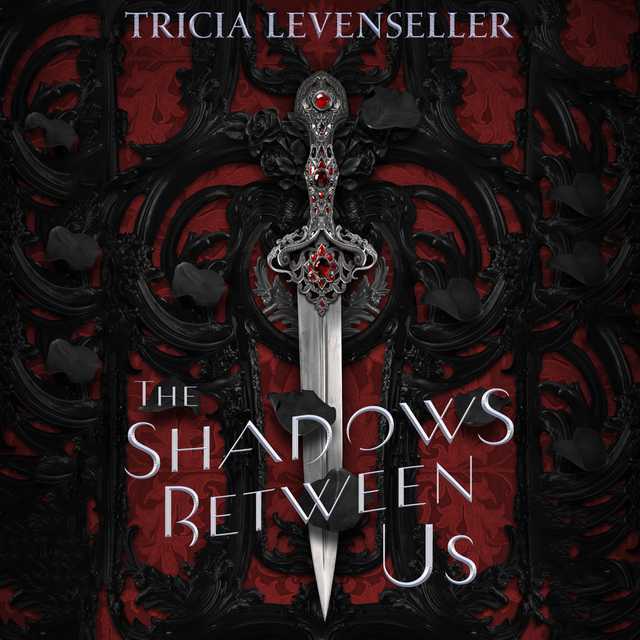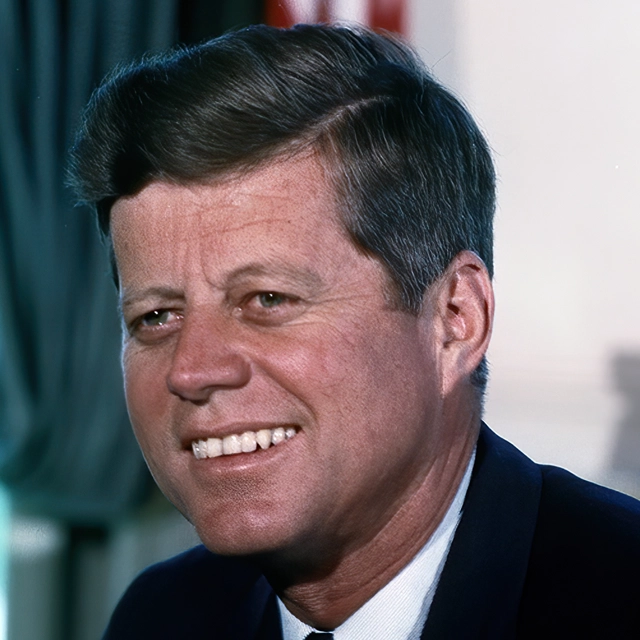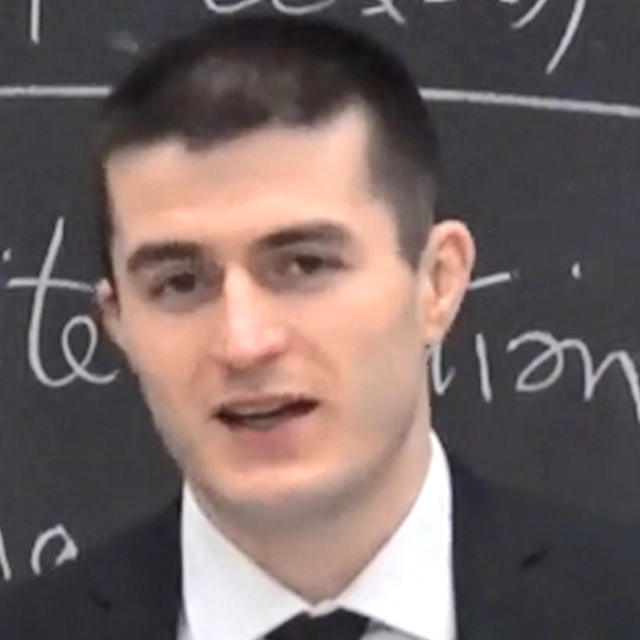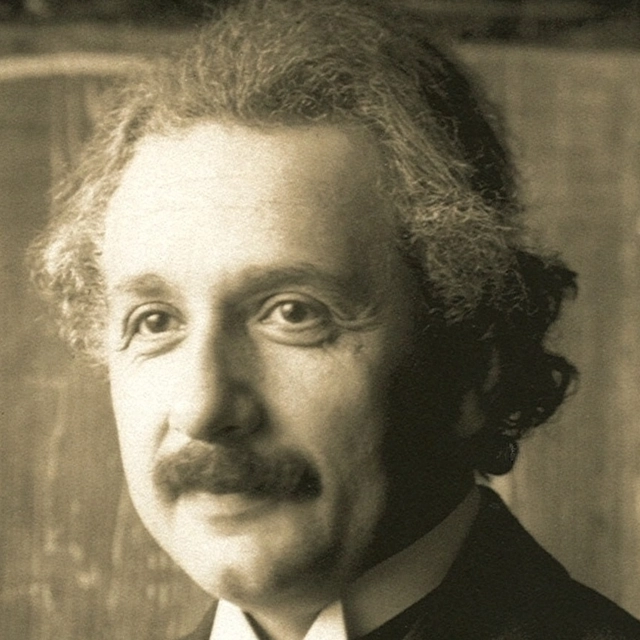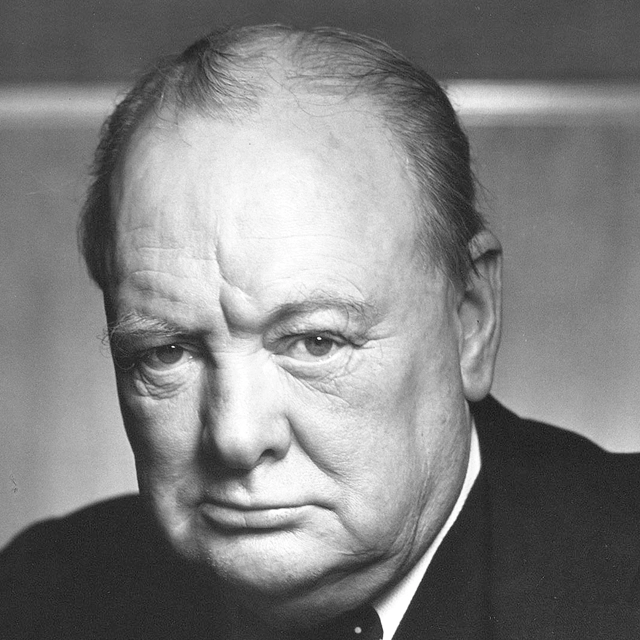Lovers at the Chameleon Club, Paris 1932 Audiobook Summary
A richly imagined and stunningly inventive literary masterpiece of love, art, and betrayal, exploring the genesis of evil, the unforeseen consequences of love, and the ultimate unreliability of storytelling itself.
Paris in the 1920s shimmers with excitement, dissipation, and freedom. It is a place of intoxicating ambition, passion, art, and discontent, where louche jazz venues like the Chameleon Club draw expats, artists, libertines, and parvenus looking to indulge their true selves. It is at the Chameleon where the striking Lou Villars, an extraordinary athlete and scandalous cross-dressing lesbian, finds refuge among the club’s loyal denizens, including the rising Hungarian photographer Gabor Tsenyi, the socialite and art patron Baroness Lily de Rossignol; and the caustic American writer Lionel Maine.
As the years pass, their fortunes–and the world itself–evolve. Lou falls desperately in love and finds success as a race car driver. Gabor builds his reputation with startlingly vivid and imaginative photographs, including a haunting portrait of Lou and her lover, which will resonate through all their lives. As the exuberant twenties give way to darker times, Lou experiences another metamorphosis–sparked by tumultuous events–that will warp her earnest desire for love and approval into something far more.
Other Top Audiobooks
Lovers at the Chameleon Club, Paris 1932 Audiobook Narrator
Edoardo Ballerini is the narrator of Lovers at the Chameleon Club, Paris 1932 audiobook that was written by Francine Prose
Francine Prose is the author of twenty-one works of fiction including, the highly acclaimed Mister Monkey; the New York Times bestseller Lovers at the Chameleon Club, Paris 1932; A Changed Man, which won the Dayton Literary Peace Prize; and Blue Angel, which was a finalist for the National Book Award. Her works of nonfiction include the highly praised Anne Frank: The Book, The Life, The Afterlife, and the New York Times bestseller Reading Like a Writer, which has become a classic. The recipient of numerous grants and honors, including a Guggenheim and a Fulbright, a Director’s Fellow at the Center for Scholars and Writers at the New York Public Library, Prose is a former president of PEN American Center, and a member of the American Academy of Arts and Letters and the American Academy of Arts and Sciences. She is a Distinguished Writer in Residence at Bard College.
About the Author(s) of Lovers at the Chameleon Club, Paris 1932
Francine Prose is the author of Lovers at the Chameleon Club, Paris 1932
More From the Same
- Author : Francine Prose
- Caravaggio
- Mister Monkey
- Blue Angel
- Peggy Guggenheim
- The Vixen
- Publisher : HarperAudio
- Abraham
- American Gods [TV Tie-In]
- Dead Ringer
- House of Sand and Fog
- Prey
Lovers at the Chameleon Club, Paris 1932 Full Details
| Narrator | Edoardo Ballerini |
| Length | 18 hours 12 minutes |
| Author | Francine Prose |
| Category | |
| Publisher | HarperAudio |
| Release date | April 22, 2014 |
| ISBN | 9780062331847 |
Subjects
The publisher of the Lovers at the Chameleon Club, Paris 1932 is HarperAudio. includes the following subjects: The BISAC Subject Code is Fiction, Historical
Additional info
The publisher of the Lovers at the Chameleon Club, Paris 1932 is HarperAudio. The imprint is HarperAudio. It is supplied by HarperAudio. The ISBN-13 is 9780062331847.
Global Availability
This book is only available in the United States.
Goodreads Reviews
Jill
June 13, 2016
Early on in Francine Prose’s richly imagined and intricately constructed tour de force, Yvonne – the proprietress of the Parisian Chameleon Club –tells a story about her pet lizard, Darius. “One night I was working out front. My friend, a German admiral whose name you would know, let himself into my office and put my darling Darius on my paisley shawl. He died, exhausted by the strain of turning all those colors.”History – and the people who compose it – is itself a chameleon, subject to multiple interpretations. Ms. Prose seems less interested in exploring “what is the truth” and more intrigued with the question, “Is there truth?” The title derives from a photograph that defined the career of the fictional photographer, Gabor Tsenyl: two female lovers lean towards each other at the Chameleon Club table. His is one of five narratives that punctuate the novel. The showcase narrative – written as a biography by the grand-niece of one of the participants – focuses on Lou Villars, a one-time Olympic hopeful and scandalous cross-dresser who crosses over to the dark side and becomes a Nazi collaborator. The other four narratives are composed of devoted letters from Gabor to his parents; the unpublished memoirs of Suzanne, his wife; excerpts from a book by the libertine expatriate writer Lionel Maine; and finally, the memoirs of a benefactor of the arts, Baroness Lily de Rossignol. Each narrative plays off the others and provides subtle suggestions that the other narratives may not be entirely accurate.What is the truth of this intoxicating time, when artists of all kinds gravitated to the Paris scene and when war with Germany was an increasingly sober possibility? Francine Prose suggests that the truth is fluid. Reportedly, Lou Villars was inspired by a real person named Violette Morris. There are more than a few hints of Peggy Guggenheim in Lily de Rossignol and Lionel Maine bears a resemblance to Henry Miller. How much is fact and how much is fiction?And once the reader gets over that hurdle, how much of what is revealed by the fictional characters is distorted through their own lens? How much of that is truth and how much is perception? Can we ever know the real person who lurks behind the mask? As Francine Prose writes, “The self who touches and is touched in the dark ,between the sheets, is not the same self who gets up in the morning and goes out to buy coffee and croissants.I’ve said little about plot and that’s deliberate: the unfolding of the plot is for each reader to discover himself or herself. I will say this: the writing is exquisite and in my opinion, elevates an already talented contemporary writer to entirely new levels. The ending is breathtaking in its audacity. The setting – Paris in the late 1920s – is mesmerizing. The themes touch on universal matters: getting in touch with our authentic selves, crossing society-imposed gender barriers, understanding the fluidness of morality, searching for love and approval in dangerous places, making sacrifices for art, and discovering that history is not immutable, but changes depending on who tells it.I read Lovers in the Chameleon Club directly after another very disparate book: Helen Oyeyemi’s Boy Snow Bird. Interestingly, both tackle the meaning of truth from very different yet unique angles. This is a stunning book and I enthusiastically recommend it.
Ron
April 27, 2014
Pssst. Looking for a good read? Check out the Chameleon Club in Montparnasse. Go alone — or with someone you trust. Step down a few stairs, knock on the door and whisper the password: “Police! Open up!”Welcome to “Lovers at the Chameleon Club, Paris 1932.” Inside these smoky pages you’ll find an oasis of ribald humor, sexual transgression and military intrigue. Our host, Yvonne, is a Hungarian singer with a pet lizard and a weakness for sailors. Play nice and she’ll let you mingle with one of Europe’s most famous photographers or a cross-dressing Nazi collaborator or the wife (ha!) of a luxury automaker. And look — sitting behind those naked men painted silver, isn’t that some scandalous American writer talking to a dancing girl with suspiciously broad shoulders? (Don’t ask, don’t tell.)So dazzlingly does Francine Prose re-create this seamy chapter of mid-century Paris that it’s tempting to think of her as not a novelist but an editor who corralled all these people into a raucous work of history. But for all Prose’s dark magic, blades of fact slice through this novel, too. Her inspiration came from a black-and-white photograph she saw in Washington at the National Gallery almost 15 years ago. Taken in 1932 by the young Hungarian now known to the world as Brassaï, the picture shows two women: one in a party dress, the other in a man’s suit. Curious about the cross-dresser, Prose discovered that she was Violette Morris, a celebrated French athlete who later betrayed her country to Hitler and tortured Resistance members for the Gestapo. “It was such an amazing story that I considered writing it as nonfiction,” she says, “but I soon decided that I would have more liberty, and that I and my readers would have a lot more fun, if I wrote it as a novel.”Vive la liberté!Sexual roles aren’t the only things crossed in this spectacular saga of Paris at war. Deadly serious and hilariously gossipy, “Lovers at the Chameleon Club” comes to us as a collection of documents written by people with wildly different perspectives and motives. Even as these characters retain their own personalities in this noisy conversation, Prose fits shards of history together to form a mosaic that only we can see. The interlocking voices — all seductive and unreliable in their own ways — show Paris as it devolves from the decadence and gallows humor of the 1930s to the terror and bravery of the Occupation.In this alchemy of patriotism, xenophobia, sexual frustration and anti-Semitism, Prose raises up underground heroes and cosmic villains. We hear first off from Brassaï — renamed Gabor — in his affectionate letters to his parents in Hungary. Full of gratitude for their financial support, he describes the bizarre sights of the city even while begging them not to worry. “I know your blood must run cold,” he says, “at the thought of supporting a son whose ambition is to photograph transvestites.” But his ambition rises far higher than that, and his profession gives the novel a gorgeous lens through which to record Paris — “an insomniac’s heaven” — in those anxious years before the tanks roll in. “Is it my fault,” he asks, “that desperation looks so stunning through the camera lens?”His radical techniques — from surreptitious candids to restaged street scenes and shadowy night shots — reflect Prose’s own approach as a literary artist. She, too, mixes historical tableaux with carefully re-imagined moments and alluringly distorted visions. Among the many unforgettable scenes in these pages is a lavish dinner party during the Olympics hosted by Adolf Hitler, whose queenly graciousness renders the event equally comic and grotesque. But usually Prose works off in the wings of history, changing the names of almost-forgotten figures and blending their stranger-than-fiction lives into a cabaret act of horror and heroism.From the ranks of Brassaï’s friends and lovers, she lifts Henry Miller and refashions him as archly cynical Lionel Maine, a writer constantly on the prowl for women and someone to buy him a drink. We read his embellished news items for gullible Americans and snatches of his (banned) chatty memoir, “Make Yourself New.” “So what if I’m a useless middle-aged bum? A phony and a poseur. Who cares if no one reads my work?” he writes in a moment of exasperated bravado. “I can write what I want and rip the ghastly wig off the beautiful bald head of truth!”Among the other characters who speak up in these chapters are Gabor’s future wife and a gorgeous baroness — a “streamlined radiant sunbeam of sleek modern beauty” — who funds Gabor’s photography career with money from her gay husband’s sports-car business. But none of these narrators is more fascinating and troubling than Nathalie Dunois, a frustrated high school teacher who has self-published a biography of Lou Villars, a.k.a. Violette Morris, the cross-dressing traitor. In the interspersed chapters of this alarmingly subjective work of scholarship, we race along with Lou’s life as she morphs from Catholic schoolgirl to cabaret dancer to Nazi collaborator.Who could make this stuff up? And yet Prose has created a particularly promiscuous biographer, who eventually becomes part of the swirling mystery of the novel. Not only does Dunois drift off into chatty complaints about her own life, but she constantly suggests the root causes of Lou’s treachery, her “elastic adaptability,” even while warning us not to draw facile psychological connections between the struggles of her youth and the history-changing crimes of her adult life: “Not every spurned lover punishes the world by telling the Germans where the Maginot Line ended.” True, but as we “wade deeper into the swamp of Lou’s psyche,” her Joan of Arc complex grows increasingly mesmerizing. What’s the source of her sexual frustration (she elects to have her breasts removed), her patient cruelty (she politely burns her countrymen with a cigarette lighter) or her attraction to race-car driving (she moves like “a lunatic on Nazi speed”)?Surely, truth is here, somewhere, scurrying through this thicket of thrilling, wrenching, self-serving testimonies. But Prose eventually deconstructs any claims to documentary evidence, forcing us to admit that historical fact may remain as elusive as the participants’ motives. Nevertheless, we crave a unified theory: Was Lou clinically depressed? Are we seeing “the power of resentment, the corrosive acid produced by the conviction that a person has been overlooked, cheated, or betrayed”? What if some nice young lesbian had really loved Lou? What if Hitler’s art teacher had been more encouraging? Such speculations are futile but irresistible.So don’t be nervous. Walk through the door of “The Chameleon Club” and you’ll be entranced by the way Prose plumbs the enigma of evil, the puzzle of history and the mystery of valor. C’est magnifique!From The Washington Post:http://www.washingtonpost.com/enterta...
Barbara
June 12, 2014
Inspired by the portrait “Lesbian Couple at Le Monocle, 1931” taken by Hungarian photographer Brassai, Francine Prose takes poetic license to write this historical fiction novel. Prose uses real people to create her characters. In the novel, Gabor Tsenyi is based on Brassai’s life in Paris. Brassi did take portraits of the seedier side of nighttime Paris in addition to the High Society of Paris. Brassi became friends with American author Henry Miller who is loosely portrayed by the character Lionel Maine. In the portrait “Lesbian Couple at Le Monocle, 1931” Violette Morris is the male-looking woman of the lesbian couple in the Brassai portrait.Violette Morris was a highly decorated French athlete whose pinnacle achievements were between the years 1921-1924. The French Women’s Athletic Federation banned Violette from competing in 1928 summer Olympics because of Violette’s lesbian lifestyle. Violette did work for the SS of Nazi Germany. In the novel, Lou Villars character follows, somewhat, Violette’s life.In Prose novel, Lou Villars evolves through the transition of the times of 1920 through 1930’s Paris. In the ‘20’s it’s fun and glamour. In the ‘30’s both Lou and Paris become dark and dangerous. Prose tells her story through five characters’ prospective, giving slants to events and providing differing accounts of events in history. The main character is Lou Villars, and depending upon who you believe, she was a true evil opportunist, or a sad and lonely girl looking for love in all the wrong places, swept up in evil though events beyond her control.I like historical fiction novels that inspire me to research characters and time periods. This book did that. Plus, it’s a highly entertaining tale.
switterbug (Betsey)
February 10, 2014
The locus of Francine Prose’s sterling new book is the fictional Chameleon Club in Paris (Montparnasse), and even more specifically, a picture of two female lovers at the club taken in 1932 (the eponymous “Lovers at the Chameleon Club”) by Hungarian photographer Gabor Tsenyi, who resides in Paris. The story takes place primarily in the years leading up to and including WW II, although the shifting narrative perspectives also encompass contemporary time reflecting back to that period. Paris comes across as more than a setting--its atmospheric presence comes alive, as if it, too, were a character in this luminous tale.Through Prose’s glowing lens and Rashomon effect, we see the darkness of the soul, the murkiness of memory, and the shadows of human existence. The central character of the novel is Lou Villars, a French lesbian, cross-dressing athlete and racecar driver, based loosely on the life of Violette Morris, who spied on France for the Nazis. She was one of the lovers in the photo, taken when she worked at the Chameleon Club. How did this poor French orphan, in love with France, come to spy on her country? The biographer in this novel is Nathalie Dunois, who she tells us is the great-niece of Suzanne Dunois, Gabor’s wife. Nathalie tells the story (in alternating chapters with other characters) about what happened during this period. In addition, she describes the psychological/philosophical experience of being a biographer--of not just Lou Villar, but of the mystery of evil.“…having encountered, time and again, the concerted efforts to remove Lou Villars from history…, I have had to embroider a bit, fill in gaps, invent dialogue, make an occasional imaginative leap or informed guess about what my subject would have thought and felt.”Besides Nathalie, Suzanne Dunois is writing her memoir (to be destroyed on her death), chronicling back to her salad days with Gabor, including memories of when Lou worked for the Chameleon Club. Other main players are American writer Lionel Maine, Gabor’s best friend, and the Baroness Lily De Rossignol, married to a wealthy industrialist/manufacturer of elite automobiles. The baroness was the main patron of Gabor, backing him financially in his photography business. Gabor’s letters home to his parents in Hungary are braided within the narratives. The chapters on Yvonne, the Hungarian who owned the Chameleon Club, are written in third person.What unfolds is an inventive story about love, betrayal, secrets, lies, identity, vice, moral truth, historical verity, the mystery of evil--and the slaying of tin gods by an author who does it with panache, and sympathy for her characters. Each person in the novel searches for sanctuary of some kind, whether concrete or ideal. The reader picks up subtle hints of contradiction between narrators, or maybe just a parallax view.Gabor’s transcendent use of his camera captures the streets and places in Paris, from lowly squalor to high society, preserving memory or manipulating it; revealing or concealing; promoting or poisoning; metaphorically reflecting or refracting a moment in time for future pondering and present unease. Gabor can capitalize on wartime tragedy:“I am thinking, It’s fabulous for my art. Is it my fault that desperation looks so stunning through the camera lens?” The truth is full of shadows and dreams, and the story questions the tilt of history’s moral compass; by the end, it seemed more like a prism.
Roger
February 10, 2018
Entirely Coincidental?This thoroughly entertaining novel carries the usual disclaimer: "Any resemblance to actual persons, living or dead, is entirely coincidental." A disingenuous disclaimer in this case, since the author admits that her source is a famous photograph, "Couple at the Monocle, Paris, 1932." Unfortunately, no doubt for copyright reasons, this is not reproduced in Prose's book, which instead has a garish cover that does the text no justice; this book is not neon but noir. This being Goodreads, I can include the picture below: two figures sitting side by side at a disheveled cafe table; one is a birdlike woman, the other a slightly pudgy man. Both are staring into private spaces of their own; the male figure seems distracted, a little sad, even tormented; what is going on in his mind? Francine Prose asked herself the same question, and the result is this novel, a stirring and at times even moving blend of imagination and fact.As the full title of the photograph would reveal, the "man" is in fact a woman in male clothes. The stylishness of her suit, tie, and silk handkerchief contrasts with the rumpled collar and her slightly lost air; this is a woman who is comfortable nowhere, certainly not in conventional female roles, but not entirely in male ones either. Prose discovered that the original was a Frenchwoman named Violette Morris, trained to phenomenal strength as an athlete in many sports, including discus, soccer, and water polo, and later achieving fame as a race-car driver. But as a national role-model, her unacceptable bisexual lifestyle got her banned from participation in the 1928 Olympics, causing her to withdraw from sport. Later still, she was recruited as a spy for the Germans and ultimately worked for the Gestapo as an interrogator.Francine Prose says she considered writing her story as non-fiction, but eventually decided on a novel. So Violette becomes Lou Villars, whose life story follows the original pretty closely. But the facts are not the point: in the first few pages, we are told the equivalent to virtually everything I have said about Violette Morris above. Prose's purpose is to ask the searching questions: how could a national heroine turn into torturer and traitor, and what did it feel like to live inside the hyperdeveloped body and tormented mind of Violette/Lou? To do this, she interweaves many voices: drafts of a biography written sixty years later, the autobiography of a French Baroness who was for a while Lou's patron, excerpts from the writings of an expatriate American writer, the letters of the Hungarian photographer who took the photo, and the memoirs of his wife, whose path crossed Lou's on several memorable occasions. Not all the voices are equally successful; the American writer seems almost peripheral to the plot and his writing has nothing of the spice of Henry Miller, his presumed model. But together they make a finely nuanced portrait not only of the major characters involved, but also of the decadent period between the wars that nursed the ensuing tragedy.[Ignore, incidentally, the references to Rashomon you will see on the book cover. Although these various accounts differ in perspective and minor detail, this only gives greater depth to the whole, and a softer-edged sympathy. There is none of the outright contradiction you get in the Kurosawa film masterpiece, although a chapter near the very end of the book will introduce a surprising new twist.]But Lou Villars, while interesting, was not the main attraction of the book for me. No, it was the artist behind the camera of the original photograph, the great Romanian photographer Brassaï. Apart from changing his name to Gabor Tsenyi and his nationality to Hungarian, Prose adheres much more closely to his real biography than she does with any of her other characters, including his fondness for photographing the Paris of the shadows and his later friendship with Picasso. His was the viewpoint that I trusted most, because in essence it still exists. Rely on the author's prose to provide insight into the torments simmering behind the man-woman in the famous photo, but keep a gallery of the real Brassaï photographs open as you read, as the perfect visual background to this intriguing novel. Here is a thumbnail sample: two more photos of lovers; a sad grotesque; and two of his Paris nocturnes, studies in loneliness.
Suanne
September 01, 2020
"Each person has his or her version of the truth about the bright and glorious days of Paris in the 1920s, the theatrical spectacle and intrigue of Berlin in the 1930s, and the darker era that began when those two worlds came together. As always, the novel ended in a very different place from that in which it began. I started off writing about a woman in a tuxedo and wound up writing about art, love, evil, money, auto racing, espionage, insomnia, seduction, and betrayal—and the way that history changes, depending on who tells it."
Isabel
September 11, 2016
Is a fascinating historical novel set in Paris before and during the Second World War. I liked the way Prose weaves several different stories and characters to create a rich tapestry of a very interesting time.
Robert
June 10, 2014
In the preface of Francine Prose's astonishing Lovers at the Chameleon Club, Paris 1932, the author tells how a Brassai photograph, "Lesbian Couple at Le Monocle, 1932," inspired her novel about "art, love, evil, money, auto racing, espionage, insomnia, seduction and betrayal–and the way that history changes depending on who tells it." That sounds comprehensive and fascinating, but Lovers at the Chameleon Club is so much more: part loving critique of human frailty, part celebration of heroism, part cautionary tale, and, all told, a ripping yarn. Presented through letters, memoirs, and a pulpy biography of one of its characters, Lovers at the Chameleon Club chronicles the intersecting lives of several Parisians occupying a timeline stretching from the heady, Cabaret-era `20s to the fascist Occupation of the `40s. We meet Lionel Maine, a Henry Miller-ish expat writer, through his essays and yellow journalism. Maine's undervalued (but not for long) girlfriend, Suzanne, speaks through a tantalizing memoir "to be destroyed in the event of the author's death." The autobiography of arts patron Baroness Lily de Rossignol offers the upper-crust perspective. Through letters home, Brassai-inspired photographer Gabor Tsenyi wrestles with success guilt while simultaneously seeking money from his parents.The locus around which everything turns is the magnetic Louisette "Lou" Villars, a lesbian racecar driver turned Gestapo agent. Lou is an analogue of the very real Violette Morris, the "butch" half of the couple in the aforementioned Brassai photo. Like Morris, Lou is an Olympic hopeful who dares to wear men's clothes in public, resulting in the revocation of her racing license by the Vichy government. Also like Morris, Lou is unlucky in love, and, oddly, captures the fancy of Hitler, who admires her athleticism and enlists her as an effective undercover agent. Most of Lou's story comes via her modern-day biographer, a narcissistic high school teacher who compulsively inserts herself into her work, and whose depictions of Nazi-era pomp are frighteningly seductive. Prose varies all of these voices with great skill, conveying widely divergent personalities and showing how storytelling is every human's innate, mysteriously powerful tool for making sense of both shadows and light. More often than not, the novel's narrators are only dimly aware of how they add artifice to their versions of events, yet Prose enables us to see this process in the characters and, ultimately, in ourselves.For all its sophistication, Lovers at the Chameleon Club zips briskly along. Late in the game, when the horrors of the Third Reich infect the cobbled Parisian streets and our characters must choose sides, the intensity becomes gut-wrenching. Not all these folks are admirable, even ones we've come to like. Some rationalize in the face of casual evil, and it's heartbreaking. This is where Prose's work delivers its biggest payload. Anyone aware of history knows, intellectually, about the Holocaust and the rise of fascist Europe. Heroes existed, but much more common were regular people, like us, standing by, paralyzed, numb. When we feel that numbness now, we fear, idly, that such evil could rise again. Lovers at the Chameleon Club is that rare art that remedies this disconnection. Prose's work serves as connective tissue to a visceral, emotional experience of our shared humanity; we ache for people we have never met, we perceive more acutely a genuine darkness against which we must be vigilant, and when we close the book, we're sensitized, and ready.
Mary
March 06, 2014
I’ve been a fan of Francine Prose since reading her wonderful and witty novel, “Blue Angel”, many years ago. Her latest, “Lovers at the Chameleon Club, Paris 1932” is magnificent; full of wonderful characters, unusually quirky settings, and strong (some more reliable than others) narrative voices.The novel proffers a unique WWII story told from various perspectives. Gabor Tsenyi is a young Hungarian photographer struggling to make a name for himself in the Parisian art scene. His patroness is Lily de Rossignol, a former Hollywood star now married to a Baron and a luxury car manufacturer. Gabor frequents the Chameleon Club, where men dress like women and women dress like men (I pictured it as similar to the Kit Kat club in the movie “Cabaret”, although that club was in Berlin). Yvonne, a chanteuse, owns the club and protects her customers. Lionel Maine is an American journalist with a hedonistic bent. He introduces Suzanne Dunois to Gabor. Years in the future, Suzanne’s niece, Nathalie, is writing a very unusual biography of a woman named Louisianne (Lou) Villars, who appears, dressed in a tuxedo, in one of Gabor’s photographs which shares the title of the novel. Who exactly IS Lou? Is she an athlete, a bare-knuckle boxer, a race car driver, a mechanic, a spy and/or a war criminal?While Lou’s is just one of the stories in the novel, it is the most enigmatic. Lou is seduced by Hitler’s world-view during the 1939 Olympics and we follower her descent from there. Each narrative voice provides a different perspective, and each contains just the right amount of ominous foreshadowing and unreliability. What is the truth? The novel has been compared to the classic film “Rashomon” which tells a core story from wildly opposing “eye witness” accounts. In the end, I don’t suppose it matters who’s version is the most accurate, when the journey has been so interesting.
Kasa
December 04, 2014
Lovers at the Chameleon Club, Paris 1932 was one of my most anticipated reads of the year. In order to fulfill those expectations, it had better be spectacular. The beginning is promising, introducing many characters being given enough time to breathe and develop. But the main character is Paris and its effect on people attracted to its ambience and the others it attracts. The Chameleon Club is a metaphor for the City of Lights, allowing its patrons to be who they want to be without sacrificing their originality, and if their memories and stories don't always jibe, they can always blame Paris.
Abbey
May 30, 2016
Maybe more of a 3.5, but it was an impressive look at one of the most fascinating eras in Paris. Each perspective was unique and brought something new to the story, and though it was a bit slow, I enjoyed it! This may be the start of a tradition where I read books set in Paris every May...
Sally
July 17, 2014
Presented through diary entries, letters, memoir and biography chapters and newspaper articles, Lovers at the Chameleon Club, Paris 1932 retells the exploits of a circle of bohemian Parisians—and a few Nazis—linked by their connection to a tawdry nightclub featuring acts by cross-dressers. Francine Prose’s characters—the novel features about eight voices—are so artfully crafted you will be surprised to find, when you inevitably Google them, that they are drawn from her imagination and that this isn’t a book in the tradition of The Paris Wife or Finding Frank.The writing is strong but accessible. For example, “Any male who pretends not to hate women’s tears is a coward, a liar, a traitor to his sex… Women’s tears can drip on us and dissolve us like acid. More poisonous than venom, tears are the mustard gas in the trenches of the war of women against men.” (Caveat: There are a fewvword choices ripped from 1970, not 1932, i.e., "f life was handing the Rossignols lemons, they’d make citron press." The book is told in three parts, with considerable, intentional foreshadowing, contraction and repetition. Who's telling the truth? In life, do we ever know? As to pacing, the middle sags a bit, leaving the reader hungry for more suspense, eager to get to higher-drama sections about the Occupation, Nazi-collaboration and the Resistance. Adolph, show up already! But all in all, this is superb book, especially for anyone interested in World War II, historical truth and half-truth or simply imaginative storytelling.
Sara
January 06, 2015
3.5 stars.Frustrating, ambitious, and well worth reading, albeit with some pretty serious caveats. I’m not sure why Prose chose an epistolary format as Lou’s dodgy biographer provides more than enough to dig into her turn toward the dark side. And maybe I just enjoy historical novels better when they unfold through minutia and build tension with small details. There's too little of this in the first 200 pages; nearly every single missive or diary entry is full of generic gushing for the wonder of pre-war Paris with a few throw ins to being mighty scared of Hitler. Character voices also bleed into one another and even the name, the Chameleon Club feels like something a straight author would dream up for a gay bar. Would Parisian gays in the 30s be that obvious? Quelle horreur.But Prose is tone deaf on the hetero manly men, too. The Henry Miller character spouts cliches, the worst being how leaving a city is harder than leaving a lover, and jokes about butch Lou as a woman “in the driver’s seat.” Now I’ve never read Miller, and maybe he was just a horn dog misogynist, but as a major literary figure of the 20th century, he probably deserves a better stand-in than a mug in a Hallmark shop. However, what's good is very good: Lou Villars being very, very bad, often more dress up doll than character, but always human. Ayelet Waldman says her book is better. Below. On Goodreads. Not even Lou Villars would stoop that low. I'm adding another star.
Most Popular Audiobooks
Frequently asked questions
Listening to audiobooks not only easy, it is also very convenient. You can listen to audiobooks on almost every device. From your laptop to your smart phone or even a smart speaker like Apple HomePod or even Alexa. Here’s how you can get started listening to audiobooks.
- 1. Download your favorite audiobook app such as Speechify.
- 2. Sign up for an account.
- 3. Browse the library for the best audiobooks and select the first one for free
- 4. Download the audiobook file to your device
- 5. Open the Speechify audiobook app and select the audiobook you want to listen to.
- 6. Adjust the playback speed and other settings to your preference.
- 7. Press play and enjoy!
While you can listen to the bestsellers on almost any device, and preferences may vary, generally smart phones are offer the most convenience factor. You could be working out, grocery shopping, or even watching your dog in the dog park on a Saturday morning.
However, most audiobook apps work across multiple devices so you can pick up that riveting new Stephen King book you started at the dog park, back on your laptop when you get back home.
Speechify is one of the best apps for audiobooks. The pricing structure is the most competitive in the market and the app is easy to use. It features the best sellers and award winning authors. Listen to your favorite books or discover new ones and listen to real voice actors read to you. Getting started is easy, the first book is free.
Research showcasing the brain health benefits of reading on a regular basis is wide-ranging and undeniable. However, research comparing the benefits of reading vs listening is much more sparse. According to professor of psychology and author Dr. Kristen Willeumier, though, there is good reason to believe that the reading experience provided by audiobooks offers many of the same brain benefits as reading a physical book.
Audiobooks are recordings of books that are read aloud by a professional voice actor. The recordings are typically available for purchase and download in digital formats such as MP3, WMA, or AAC. They can also be streamed from online services like Speechify, Audible, AppleBooks, or Spotify.
You simply download the app onto your smart phone, create your account, and in Speechify, you can choose your first book, from our vast library of best-sellers and classics, to read for free.
Audiobooks, like real books can add up over time. Here’s where you can listen to audiobooks for free. Speechify let’s you read your first best seller for free. Apart from that, we have a vast selection of free audiobooks that you can enjoy. Get the same rich experience no matter if the book was free or not.
It depends. Yes, there are free audiobooks and paid audiobooks. Speechify offers a blend of both!
It varies. The easiest way depends on a few things. The app and service you use, which device, and platform. Speechify is the easiest way to listen to audiobooks. Downloading the app is quick. It is not a large app and does not eat up space on your iPhone or Android device.
Listening to audiobooks on your smart phone, with Speechify, is the easiest way to listen to audiobooks.

